Performance Summary
This section provides the performance summary of the Google Workspace CSE service managed through CCKM on the CipherTrust Manager server. The information on this page describes:
What is the configuration (CPU, RAM, and Disk) of each server?
Where are the clients located in relation to the servers?
What are the minimum network requirements for reliable connectivity?
How many requests per second (RPS) are handled in different scenarios?
Test Setup
This section describes the test environment in which the performance of the CCKM Google Workspace CSE service has been tested. The performance numbers provided in this section are based on this setup.
Note
Actual performance numbers in your environment can be different. The results can vary based on factors such as how and where the CipherTrust Manager is deployed, the CipherTrust Manager resources, the location of clients, the network connectivity, and how the traffic is load-balanced.
CipherTrust Manager
Physical Appliance k470
Virtual CipherTrust Manager k170v deployed to
Google Cloud
Amazon Web Services (AWS)
ESX Server (VMware vSphere)
Client
k6 (an open-source load testing tool) is used as a client to simulate traffic between the Google Workspace CSE and the CipherTrust Manager.
The k6 client is deployed on the Google Cloud in the us-central1-a region.
Network Requirements
The following ports must be open for CipherTrust Manager/CCKM communication:
| Type | Protocol | Port Range |
|---|---|---|
| SSH | TCP | 22 |
| HTTPS | TCP | 443 |
| PostgreSQL (for Cluster) | TCP | 5432 |
Requests Per Second
The following sections list the wrap requests per second, approximate latency, and the number of virtual users for different deployment scenarios.
Google Cloud
CipherTrust Manager Configuration
| System Volume | Memory | CPUs | NICs |
|---|---|---|---|
| 50 GB | 16 GB | 4 | 1 |
Simulated the wrap requests for Google Workspace CSE on the CipherTrust Manager deployed on Google Cloud Platform using the k6 tool. The following table shows the handled number of requests per second (RPS), with approximate latency, and the number of virtual users for different data sample for three runs.
| Requests/Second | Latency (in ms) | Users | Server Location | Client Location |
|---|---|---|---|---|
| 62 | 90 | 40 | us-central1-a | us-central1-a |
| 55 | 68 | 35 | us-central1-a | us-central1-a |
| 47 | 82 | 30 | us-central1-a | us-central1-a |
AWS Cloud
CipherTrust Manager Configuration
| System Volume | Memory | CPUs | NICs |
|---|---|---|---|
| 50 GB | 16 GB | 4 | 1 |
AWS Cloud (Standalone)
Simulated the wrap requests for Google Workspace CSE on the CipherTrust Manager deployed on AWS cloud using the k6 tool. The following table shows the handled number of requests per second (RPS), with approximate latency, and the number of virtual users for different data sample for three runs.
| Requests/Second | Latency (in ms) | Users | Server Location | Client Location |
|---|---|---|---|---|
| 62 | 67 | 40 | us-east-1b | us-central1-a |
| 54 | 64 | 35 | us-east-1b | us-central1-a |
| 46 | 63 | 30 | us-east-1b | us-central1-a |
AWS Cloud (Cluster)
Simulated the wrap requests for Google Workspace CSE on the CipherTrust Manager deployed on AWS cloud in a two-node cluster (with load balancer) using the k6 tool. The following table shows the handled number of requests per second (RPS), with approximate latency, and the number of virtual users for different data sample for three runs.
| Requests/Second | Latency (in ms) | Users | Server Location | Client Location |
|---|---|---|---|---|
| 62 | 62 | 40 | us-east-1b | us-central1-a |
| 54 | 63 | 35 | us-east-1b | us-central1-a |
| 47 | 61 | 30 | us-east-1b | us-central1-a |
Physical Appliance
CipherTrust Manager Configuration
| System Volume | Memory | CPUs | NICs |
|---|---|---|---|
| 2 TB | 16 GB | 1 with 4 Cores | 1 |
Simulated the wrap requests for Google Workspace CSE on the CipherTrust Manager deployed on a physical appliance using the k6 tool. The following table shows the handled number of requests per second (RPS), with approximate latency, and the number of virtual users for different data sample for three runs.
| Requests/Second | Latency (in ms) | Users | Server Location | Client Location |
|---|---|---|---|---|
| 53 | 288 | 40 | San Jose | us-central1-a |
| 47 | 263 | 35 | San Jose | us-central1-a |
| 41 | 222 | 30 | San Jose | us-central1-a |
ESX Server
CipherTrust Manager Configuration
| System Volume | Memory | CPUs | NICs |
|---|---|---|---|
| 50 GB | 16 GB | 4 | 1 |
Simulated the wrap requests for Google Workspace CSE on the CipherTrust Manager deployed on an ESX Server using the k6 tool. The following table shows the handled number of requests per second (RPS), with approximate latency, and the number of virtual users for different data sample for three runs.
| Requests/Second | Latency (in ms) | Users | Server Location | Client Location |
|---|---|---|---|---|
| 60 | 86 | 40 | San Jose | us-central1-a |
| 53 | 79 | 35 | San Jose | us-central1-a |
| 45 | 76 | 30 | San Jose | us-central1-a |
Graphical Representation
Here are some graphs that show comparison of latency and requests per second against varied number of virtual users for different deployment scenarios.
Across Cloud Environments
Latency vs Virtual Users
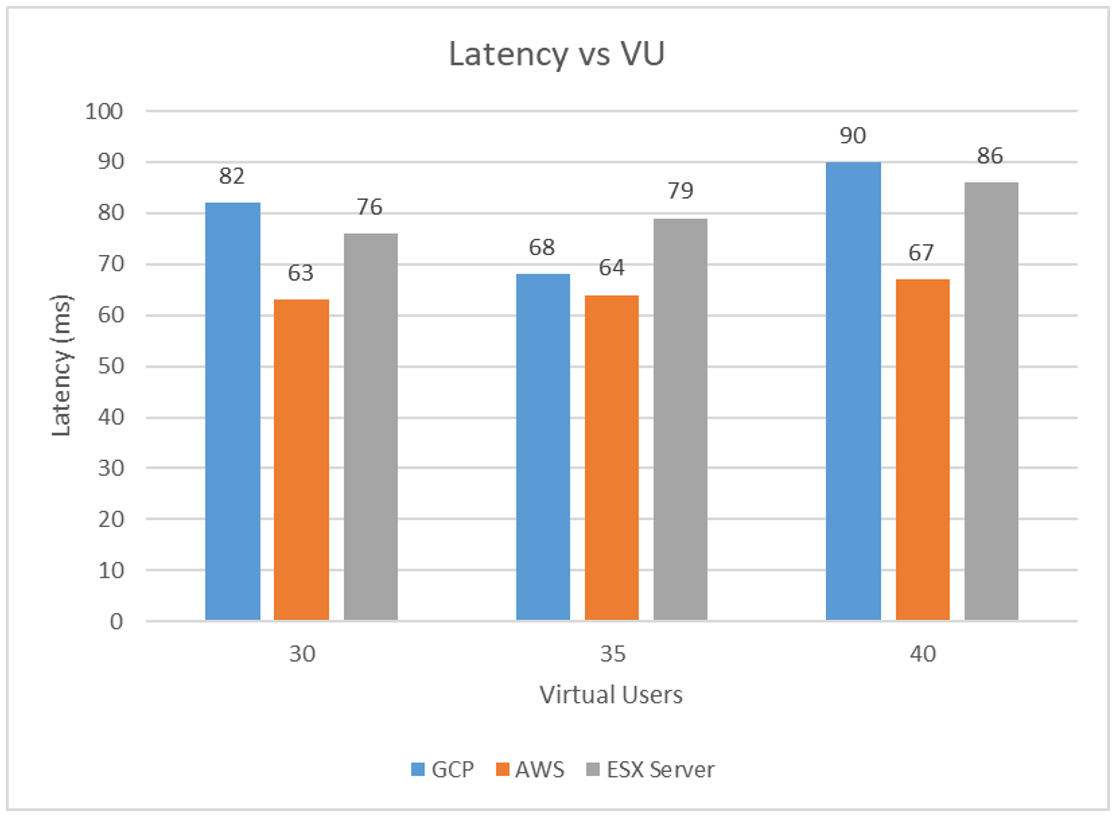
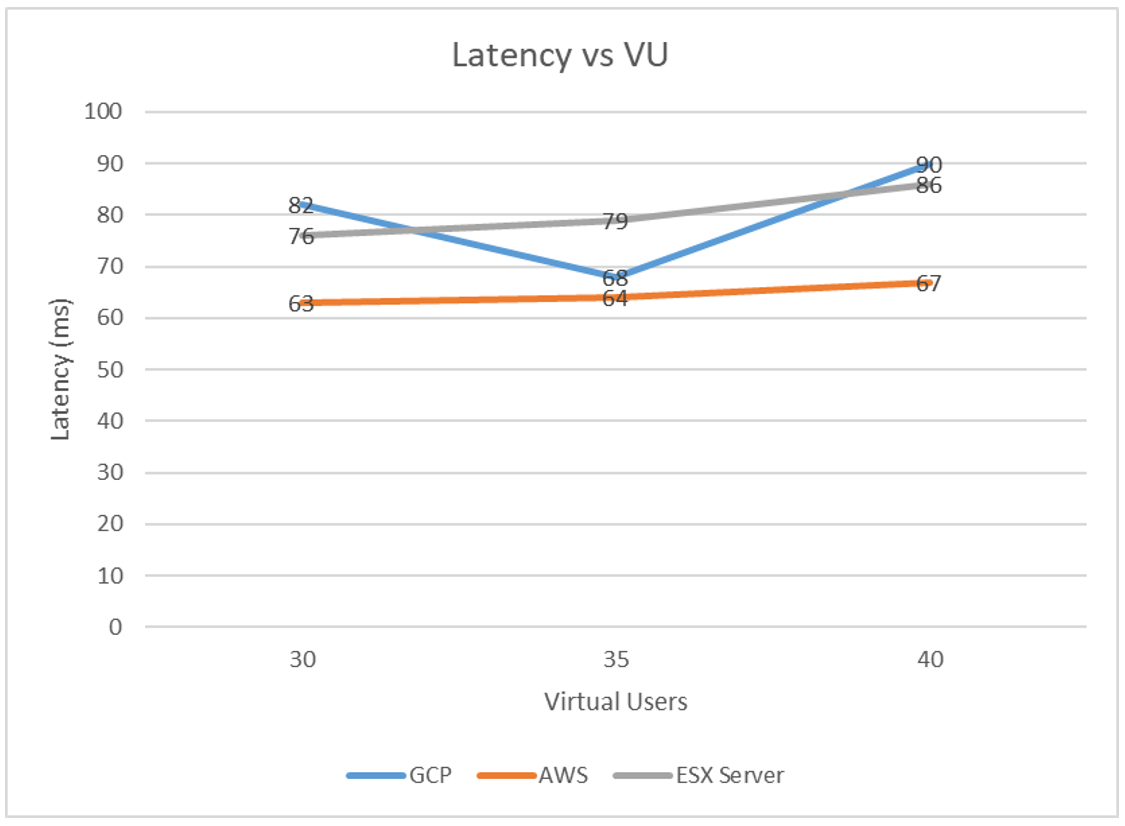
Requests/Second vs Virtual Users
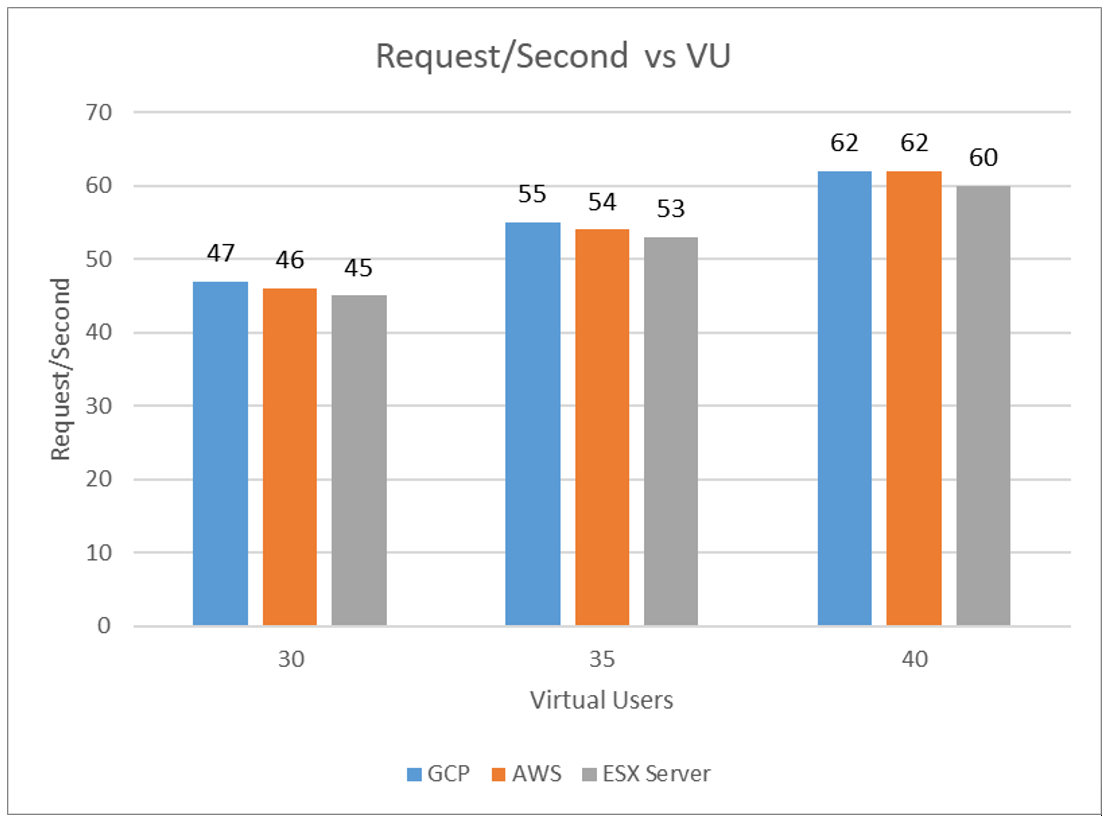
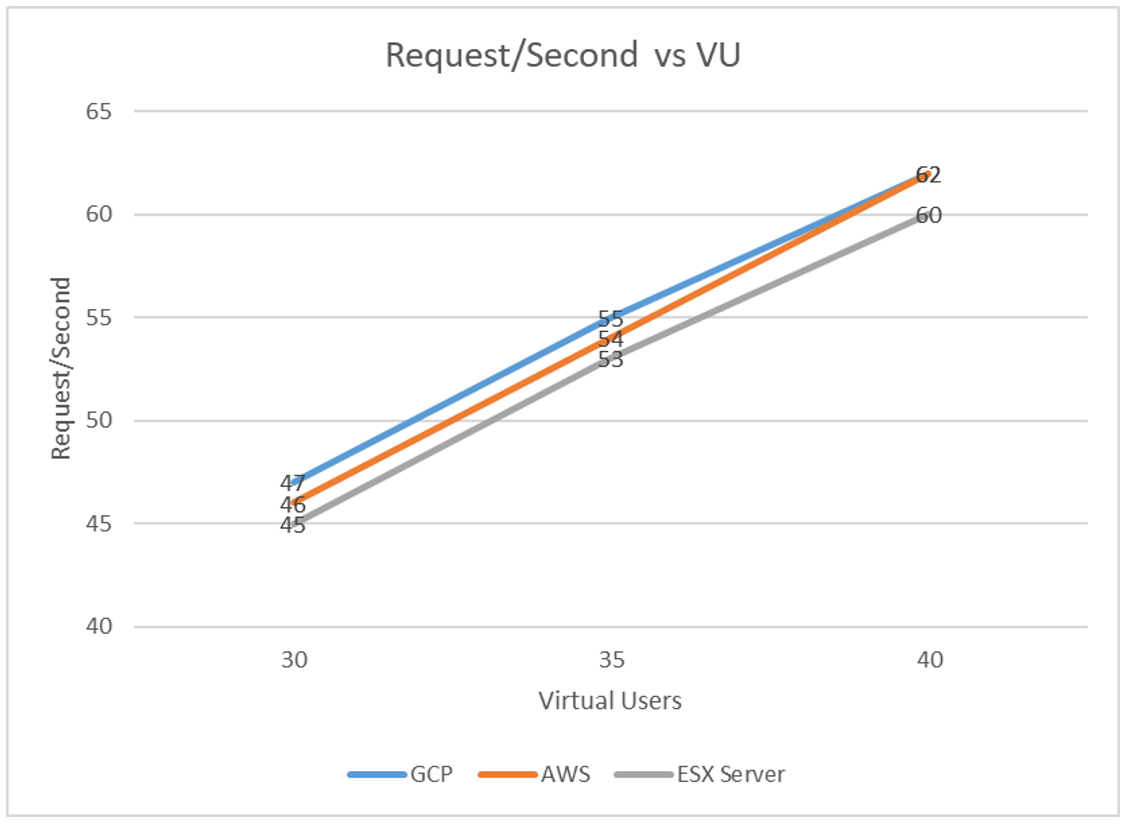
Physical Appliance vs Virtual Machine
Latency vs Virtual Users

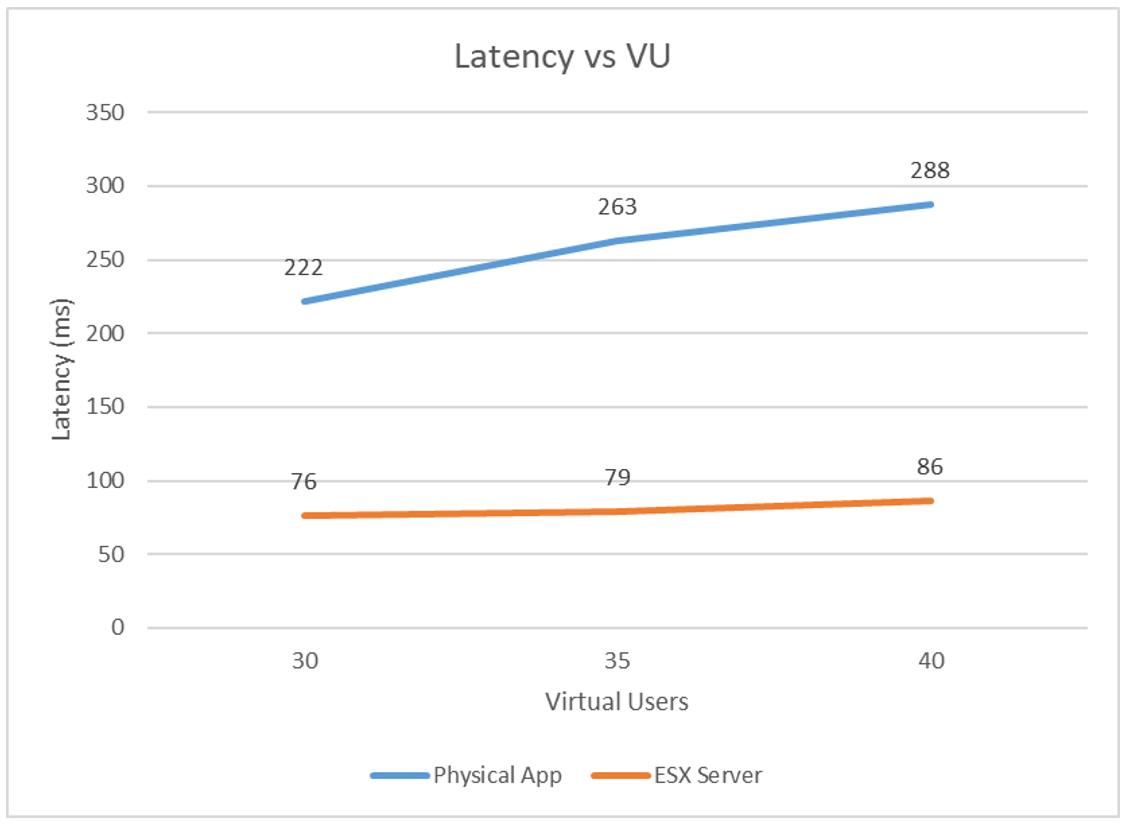
Requests/Second vs Virtual Users
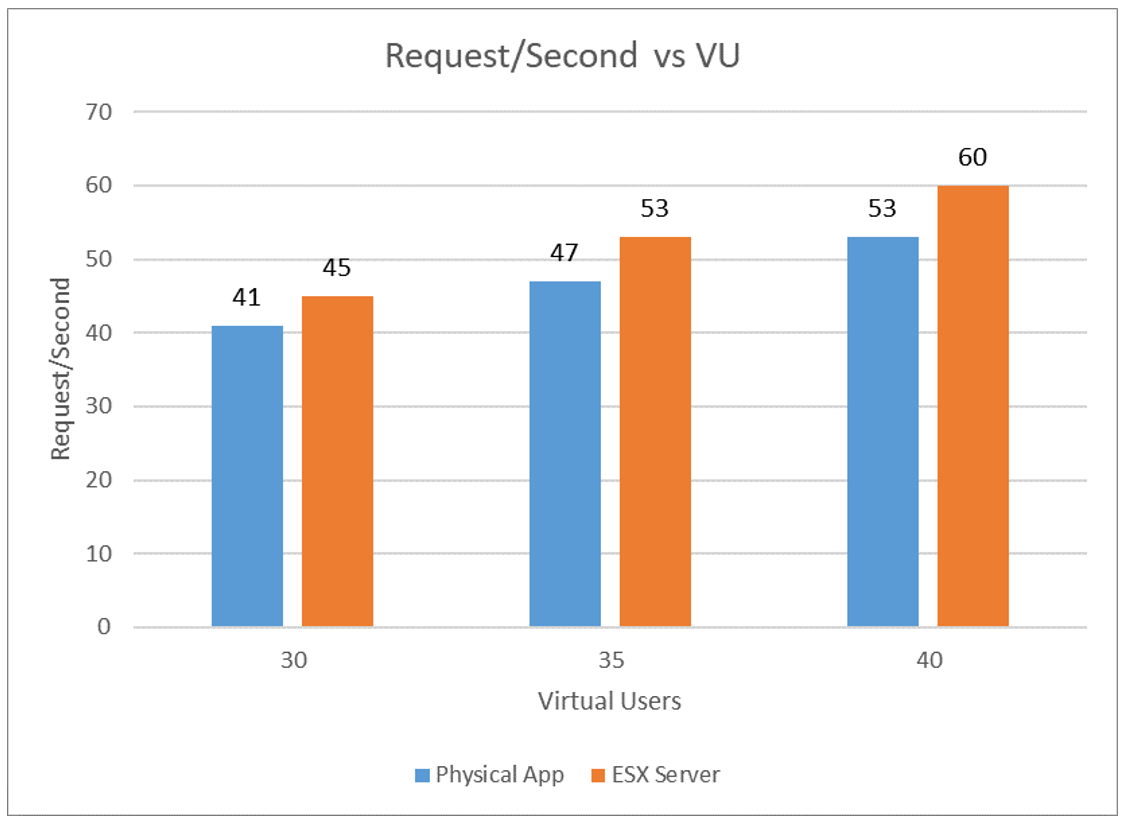
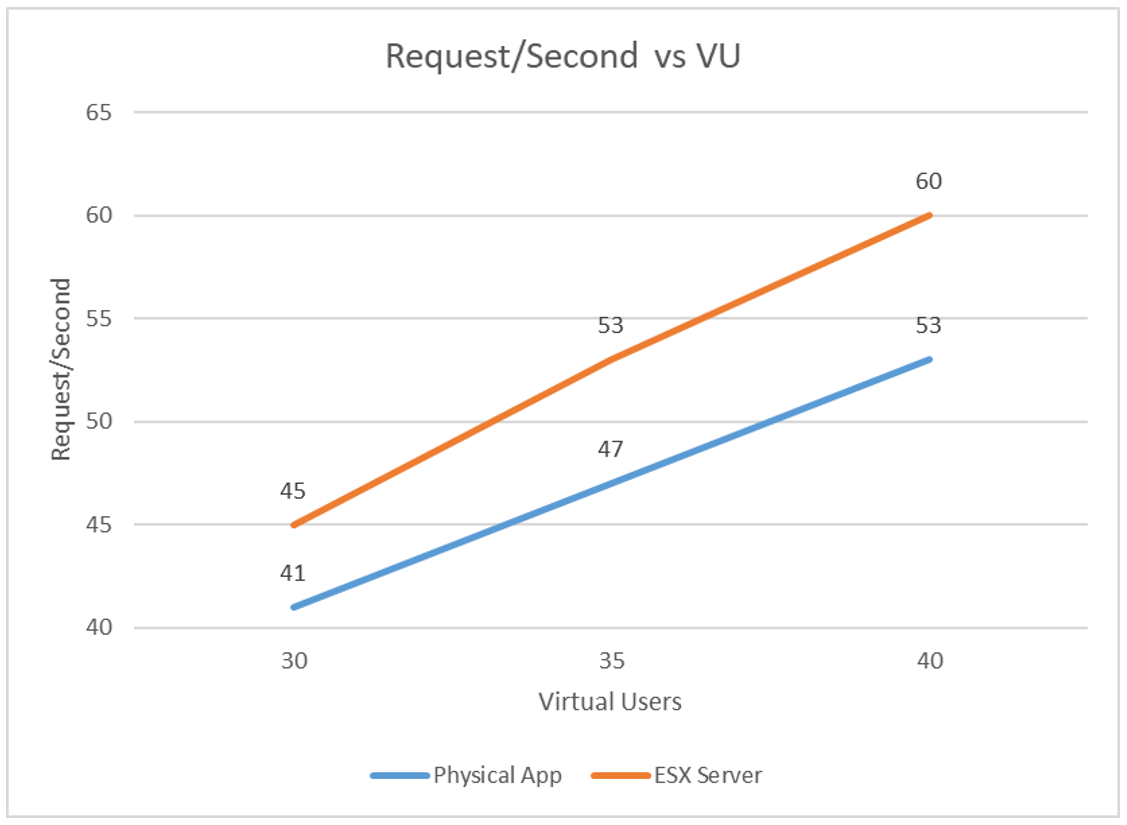
Single Node vs Two Node Cluster
Latency vs Virtual Users
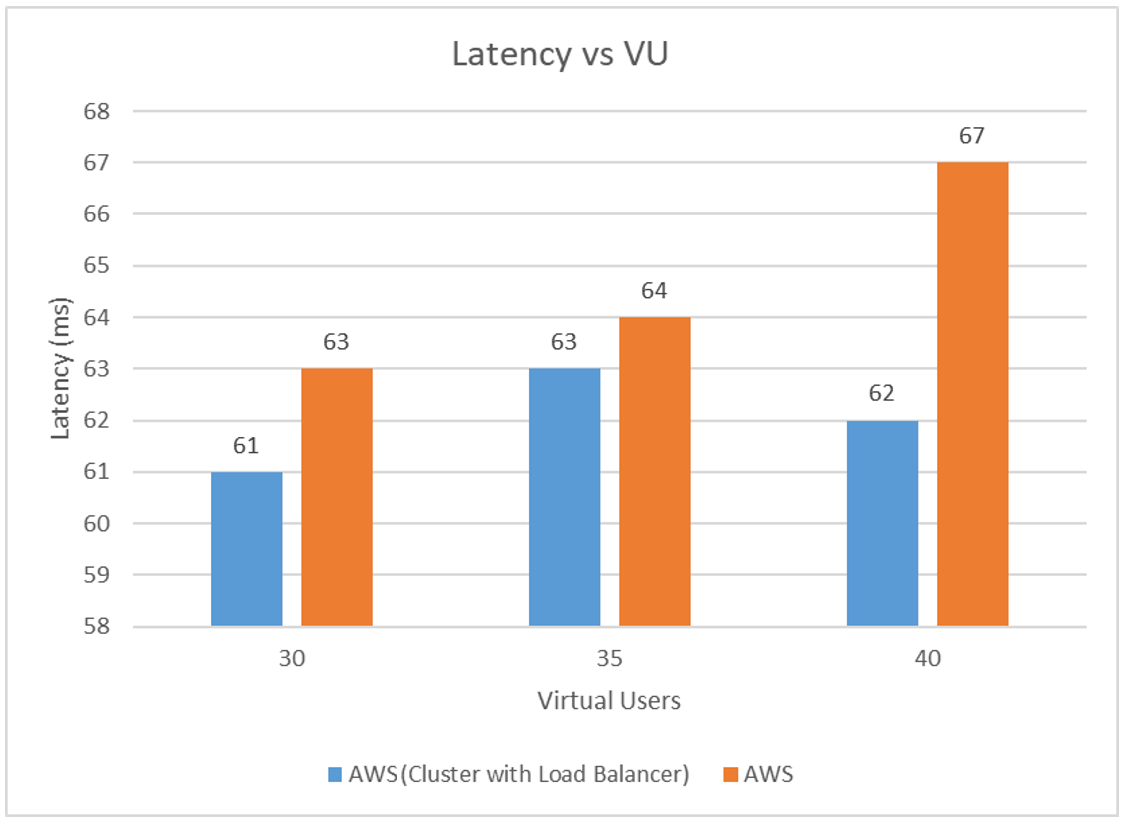
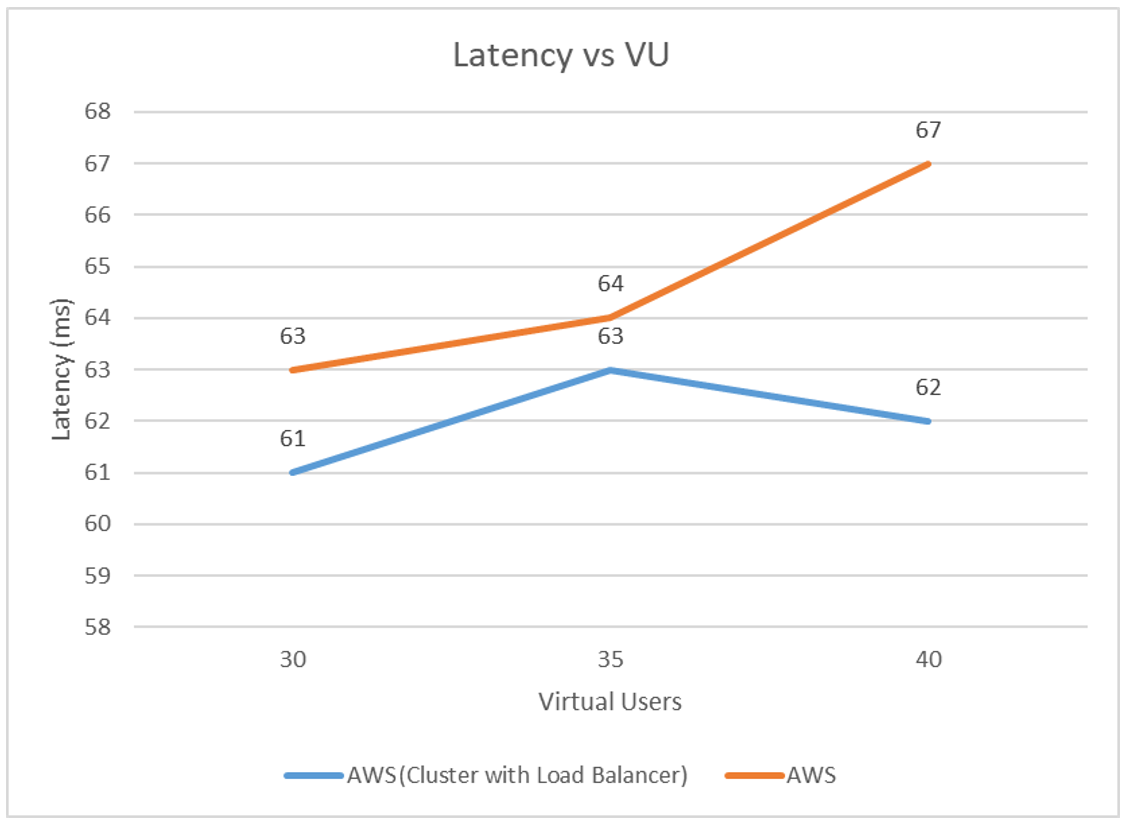
Requests/Second vs Virtual Users
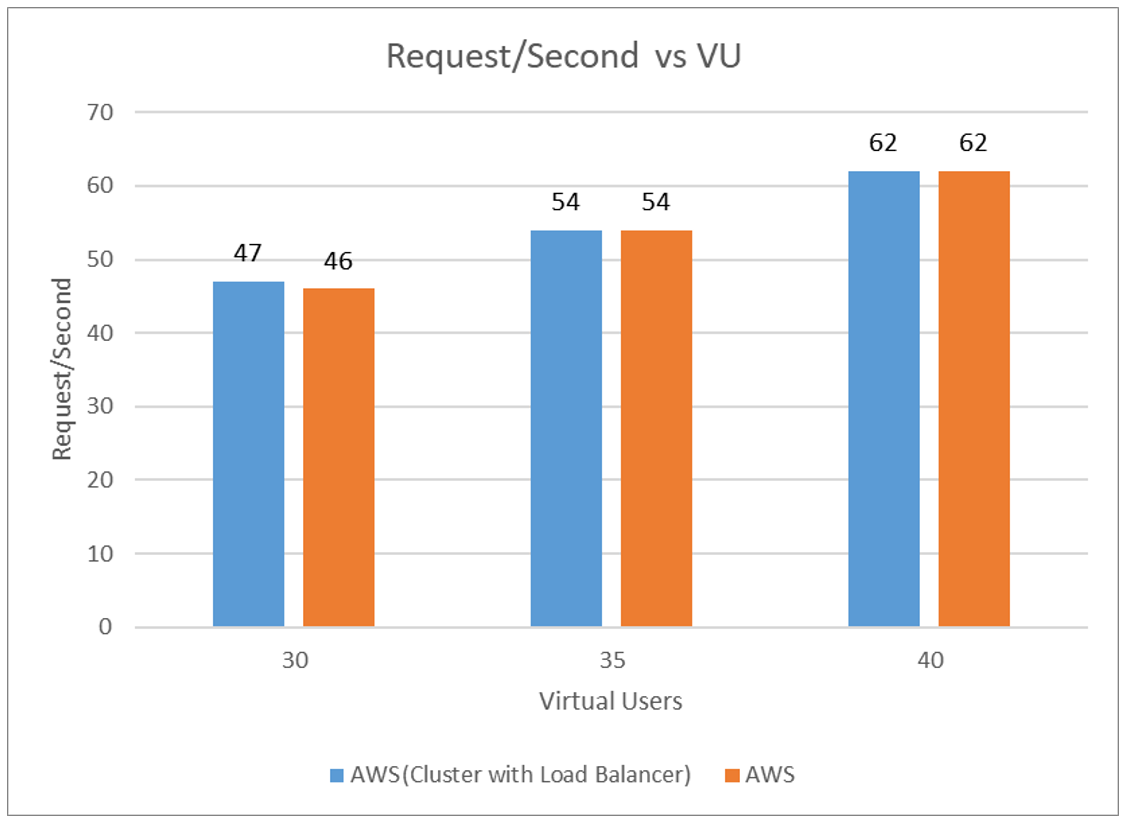
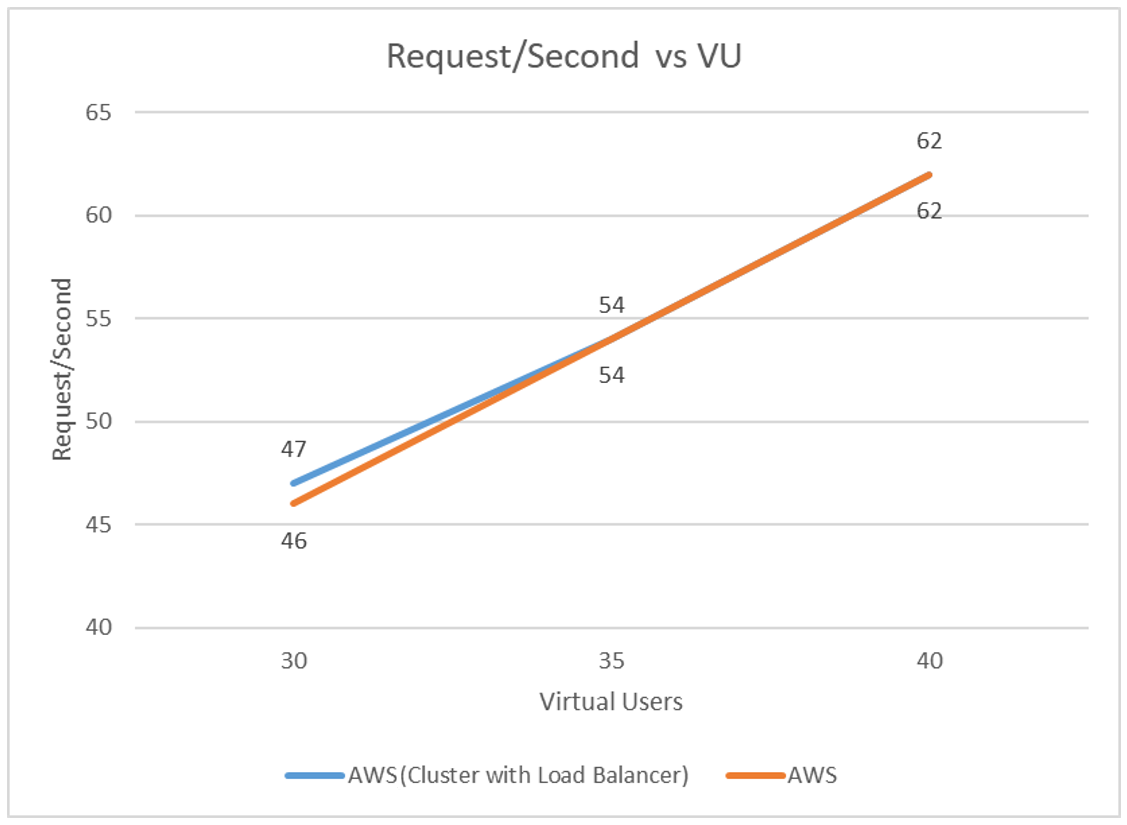
Conclusion
The requests per second (throughput) and latency is nearly close among deployment environments. So overall, the CCKM Google Workspace CSE performance is insensitive to the amount of CPU or RAM on your CipherTrust Manager appliances. Moreover, adding cluster nodes should increase the throughput linearly.

